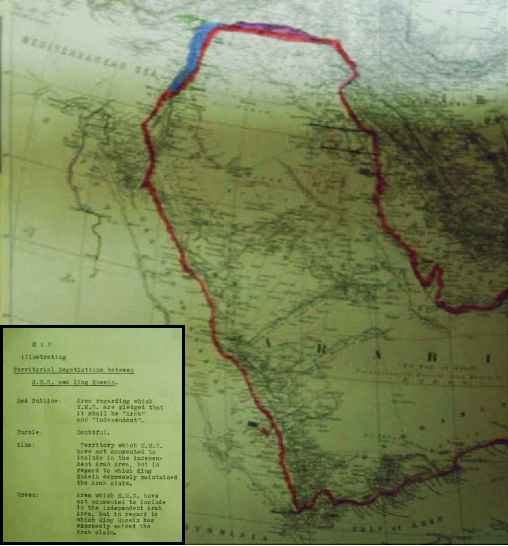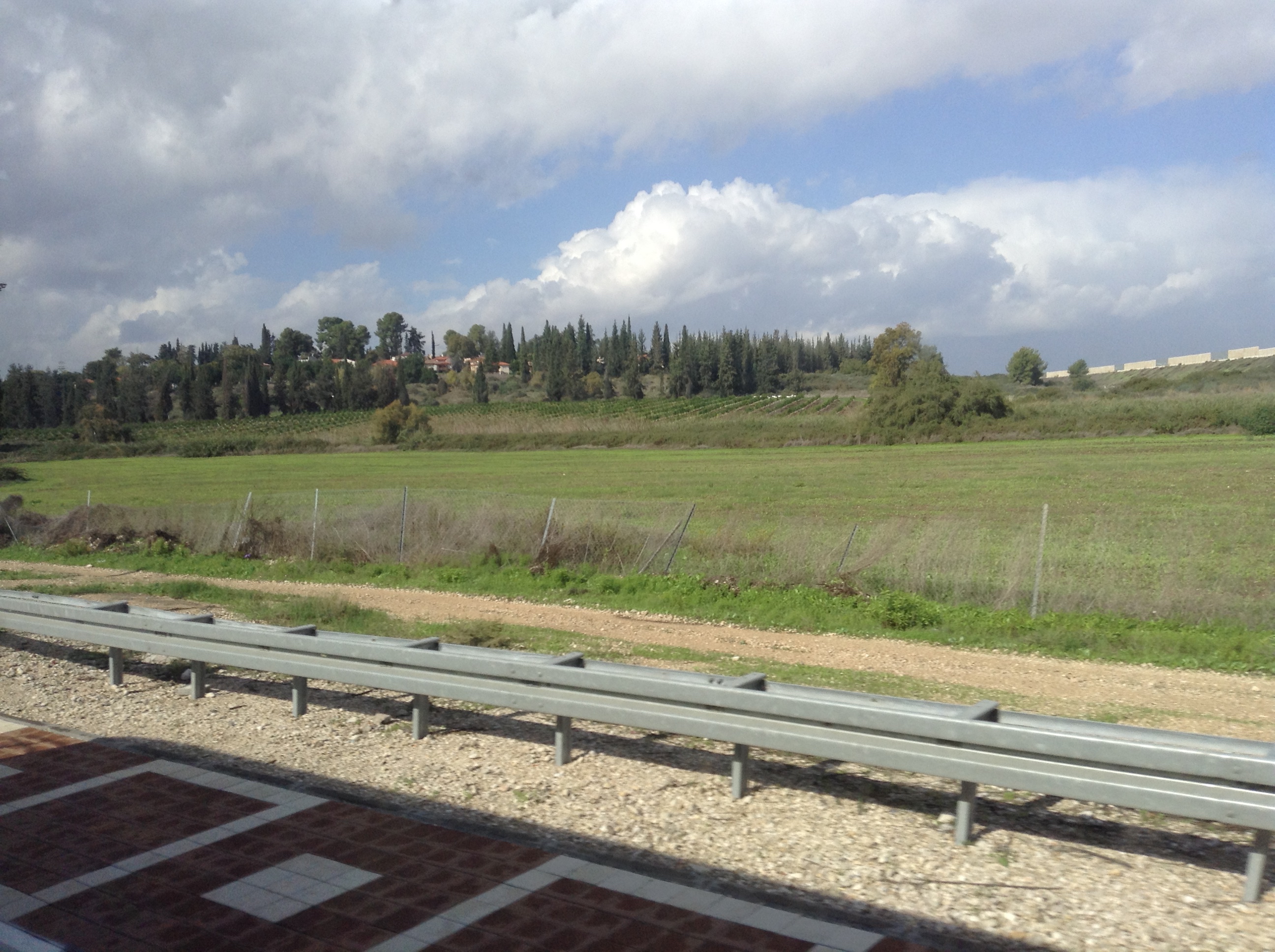|
Sykes–Picot Agreement
The Sykes–Picot Agreement () was a 1916 secret treaty between the United Kingdom and France, with assent from the Russian Empire and the Kingdom of Italy, to define their mutually agreed Sphere of influence, spheres of influence and control in an eventual partition of the Ottoman Empire. The agreement was based on the premise that the Triple Entente would achieve success in defeating the Ottoman Empire during World War I and formed part of a series of secret agreements contemplating its partition. The primary negotiations leading to the agreement took place between 23 November 1915 and 3 January 1916, on which date the British and French diplomats, Mark Sykes and François Georges-Picot, initialled an agreed memorandum. The agreement was ratified by their respective governments on 9 and 16 May 1916. The agreement effectively divided the Ottoman provinces outside the Arabian Peninsula into areas of British and French control and influence. The British- and French-controlled count ... [...More Info...] [...Related Items...] OR: [Wikipedia] [Google] [Baidu] |
Mark Sykes
Colonel Sir Tatton Benvenuto Mark Sykes, 6th Baronet (16 March 1879 – 16 February 1919) was an English traveller, Conservative Party politician, and diplomatic advisor, particularly with regard to the Middle East at the time of the First World War. He is associated with the Sykes–Picot Agreement, drawn up while the war was in progress regarding the partitioning of the Ottoman Empire by the United Kingdom, France and the Russian Empire, and was a key negotiator of the Balfour Declaration. Early life Born in Westminster, London, Mark Sykes was the only child of Sir Tatton Sykes, 5th Baronet, who, when a 48-year-old wealthy bachelor, married Christina Anne Jessica Cavendish-Bentinck, 30 years his junior. Several accounts suggest that his future mother-in-law essentially trapped Sir Tatton Sykes into marrying Christina. They were reportedly an unhappy couple. After spending large amounts of money paying off his wife's debts, Sir Tatton published a notice in the papers disavow ... [...More Info...] [...Related Items...] OR: [Wikipedia] [Google] [Baidu] |
Southern Israel
The Southern District ( he, מחוז הדרום, ''Meḥoz HaDarom''; ar, لواء الجنوب) is one of Israel's Districts of Israel, six administrative districts, the largest in terms of land area but the most Population density, sparsely populated. It covers most of the Negev desert, as well as the Arabah, Arava valley. The population of the Southern District is 1,086,240 and its area is 14,185 km2. Its population is 79.66% Jewish and 12.72% Arab (mostly Muslim), with 7.62% of other origins. The district capital is Beersheba, while the largest city is Ashdod. Beersheba's dormitory towns of Omer, Israel, Omer, Meitar, and Lehavim are affluent on an Israel scale, while the development towns of Dimona, Sderot, Netivot, Ofakim, and Yeruham and the seven Negev Bedouins, Bedouin cities are lower on the socio-economic scale. [...More Info...] [...Related Items...] OR: [Wikipedia] [Google] [Baidu] |
Constantinople
la, Constantinopolis ota, قسطنطينيه , alternate_name = Byzantion (earlier Greek name), Nova Roma ("New Rome"), Miklagard/Miklagarth (Old Norse), Tsargrad ( Slavic), Qustantiniya (Arabic), Basileuousa ("Queen of Cities"), Megalopolis ("the Great City"), Πόλις ("the City"), Kostantiniyye or Konstantinopolis ( Turkish) , image = Byzantine Constantinople-en.png , alt = , caption = Map of Constantinople in the Byzantine period, corresponding to the modern-day Fatih district of Istanbul , map_type = Istanbul#Turkey Marmara#Turkey , map_alt = A map of Byzantine Istanbul. , map_size = 275 , map_caption = Constantinople was founded on the former site of the Greek colony of Byzantion, which today is known as Istanbul in Turkey. , coordinates = , location = Fatih, İstanbul, Turkey , region = Marmara Region , type = Imperial city , part_of = , length = , width ... [...More Info...] [...Related Items...] OR: [Wikipedia] [Google] [Baidu] |
Western Armenia
Western Armenia (Western Armenian: Արեւմտեան Հայաստան, ''Arevmdian Hayasdan'') is a term to refer to the eastern parts of Turkey (formerly the Ottoman Empire) that are part of the historical homeland of the Armenians. Western Armenia, also referred to as Byzantine Armenia, emerged following the division of Greater Armenia between the Byzantine Empire (Western Armenia) and Sassanid Persia (Eastern Armenia) in 387 AD. The area was conquered by the Ottomans in the 16th century during the Ottoman–Safavid War (1532–1555) against their Iranian Safavid arch-rivals. Being passed on from the former to the latter, Ottoman rule over the region became only decisive after the Ottoman–Safavid War of 1623–1639. The area then became known also as Turkish Armenia or Ottoman Armenia. During the 19th century, the Russian Empire conquered all of Eastern Armenia from Iran, and also some parts of Turkish Armenia, such as Kars. The region's Armenian population was affec ... [...More Info...] [...Related Items...] OR: [Wikipedia] [Google] [Baidu] |
Sazonov–Paléologue Agreement
The Sazonov–Paléologue Agreement was a 26 April 1916 letter from Russian Foreign minister Sergey Sazonov to French ambassador to Russia Maurice Paléologue regarding Western Armenia and the Anglo-French Sykes–Picot Agreement. The agreement for Russia influence over Western Armenia was given in return for Russian assent to the Sykes-Picot arrangement. The agreement took place on the first anniversary of the Treaty of London. Russia was allocated the vilayets of Erzurum, Trebizond, Bitlis and Van A van is a type of road vehicle used for transporting goods or people. Depending on the type of van, it can be bigger or smaller than a pickup truck and SUV, and bigger than a common car. There is some varying in the scope of the word across th ...; much of which was under Russian occupation at the time. Bibliography The Allies and Armenia, 1915-18 Richard G. Hovannisian, Journal of Contemporary History, Vol. 3, No. 1 (Jan., 1968), pp. 145-168 References {{DEFAULTSORT: ... [...More Info...] [...Related Items...] OR: [Wikipedia] [Google] [Baidu] |
Lebanon
Lebanon ( , ar, لُبْنَان, translit=lubnān, ), officially the Republic of Lebanon () or the Lebanese Republic, is a country in Western Asia. It is located between Syria to the north and east and Israel to the south, while Cyprus lies to its west across the Mediterranean Sea; its location at the crossroads of the Mediterranean Basin and the Arabian hinterland has contributed to its rich history and shaped a cultural identity of religious diversity. It is part of the Levant region of the Middle East. Lebanon is home to roughly six million people and covers an area of , making it the second smallest country in continental Asia. The official language of the state is Arabic, while French is also formally recognized; the Lebanese dialect of Arabic is used alongside Modern Standard Arabic throughout the country. The earliest evidence of civilization in Lebanon dates back over 7000 years, predating recorded history. Modern-day Lebanon was home to the Phoenicians, a m ... [...More Info...] [...Related Items...] OR: [Wikipedia] [Google] [Baidu] |




